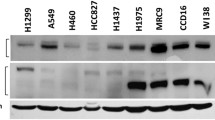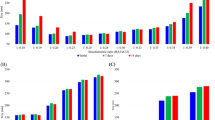Abstract
Lung carcinoma ranks highest in cancer-related death (about 20% of total cancer deaths) due to poor prognosis and lack of efficient management therapy. Owing to the lack of effective therapeutic approaches, survival rate of less than 5 years persists over the years among non-small cell lung cancer (NSCLC) patients. Capsaicin (CAP) is well reported for its antiproliferative and antioxidant properties in various literature but lacks an appropriate delivery carrier. The present study was aimed to develop CAP-loaded hyaluronic acid (HA) nanoparticles (NPs) utilizing layer by layer technique to achieve enhanced and precise delivery as well as target specificity. The NPs were evaluated for in vitro release, particle size, zeta potential, and cytotoxicity on A549 cells. The optimized NPs exhibited a particle size of 194 ± 2.90 nm, − 27.87 ± 3.21 mV zeta potential, and 80.70 ± 4.29% release, respectively, over a period of 48 h. Flow cytometric analysis revealed superior performance of HA-PCL-CAP in terms of suppressed cell viability in A549 cell lines when compared with CAP and PCL-CAP. Further, HA-anchored NPs were evaluated in vivo for their therapeutic efficacy in urethane-induced lung carcinoma in rat model. The superlative therapeutic potential of HA-PCL-CAP was advocated from the results of reactive oxygen species and mitochondrial membrane-mediated apoptosis. HA-PCL-CAP-administered groups presented greater therapeutic efficacy as revealed through reduced tumor volume and improved animal survival rate. A greater drug accumulation in tumor tissue as revealed from biodistribution studies evidences targeting potential of HA-PCL-CAP in urethane-induced lung carcinoma.

Graphical abstract











Similar content being viewed by others
Change history
05 May 2020
A Correction to this paper has been published: https://doi.org/10.1007/s13346-020-00783-8
20 April 2023
This article has been retracted. Please see the Retraction Notice for more detail: https://doi.org/10.1007/s13346-023-01354-3
References
Bölükbas DA, Meiners S. Lung cancer nanomedicine: potentials and pitfalls. Nanomedicine. 2015;10(21):3203–12.
Fajersztajn L, Veras M, Barrozo LV, Saldiva P. Air pollution: a potentially modifiable risk factor for lung cancer. Nat Rev Cancer. 2013;13(9):674–8.
Houston KA, Henley SJ, Li J, White MC, Richards TB. Patterns in lung cancer incidence rates and trends by histologic type in the United States, 2004–2009. Lung Cancer. 2014;86(1):22–8.
Soni N, Soni N, Pandey H, Maheshwari R, Kesharwani P, Tekade RK. Augmented delivery of gemcitabine in lung cancer cells exploring mannose anchored solid lipid nanoparticles. J Colloid Interface Sci. 2016;481:107–16.
Arya M, Tiwari P, Tripathi CB, Parashar P, Singh M, Sinha P, et al. Colloidal vesicular system of inositol hexaphosphate to counteract DMBA induced dysregulation of markers pertaining to cellular proliferation/differentiation and inflammation of epidermal layer in mouse model. Mol Pharm. 2017;14(3):928–39.
Parashar P, Rathor M, Dwivedi M, Saraf SA. Hyaluronic acid decorated naringenin nanoparticles: appraisal of chemopreventive and curative potential for lung cancer. Pharmaceutics. 2018;10(1):33.
Senbanjo LT, Chellaiah MA. CD44: a multifunctional cell surface adhesion receptor is a regulator of progression and metastasis of cancer cells. Front Cell Dev Biol. 2017;5:18.
Najlah M, Ahmed Z, Iqbal M, Wang Z, Tawari P, Wang W, et al. Development and characterisation of disulfiram-loaded PLGA nanoparticles for the treatment of non-small cell lung cancer. Eur J Pharm Biopharm. 2017;112:224–33.
Parveen S, Sahoo SK. Long circulating chitosan/PEG blended PLGA nanoparticle for tumor drug delivery. Eur J Pharmacol. 2011;670(2–3):372–83.
Semete B, Booysen L, Kalombo L, Venter JD, Katata L, Ramalapa B, et al. In vivo uptake and acute immune response to orally administered chitosan and PEG coated PLGA nanoparticles. Toxicol Appl Pharmacol. 2010;249(2):158–65.
Vila A, Sanchez A, Tobıo M, Calvo P, Alonso M. Design of biodegradable particles for protein delivery. J Control Release. 2002;78(1–3):15–24.
Amreddy N, Babu A, Muralidharan R, Munshi A, Ramesh R. Polymeric nanoparticle-mediated gene delivery for lung cancer treatment. Top Curr Chem. 2017;375(2):35.
Chang J-E, Cho H-J, Jheon S Anticancer efficacy of photodynamic therapy with lung cancer-targeted nanoparticles. J Vis Exp. 2016;(118):e54865.
Gao S, Wang J, Tian R, Wang G, Zhang L, Li Y, et al. Construction and evaluation of a targeted hyaluronic acid nanoparticle/photosensitizer complex for cancer photodynamic therapy. ACS Appl Mater Interfaces. 2017;9(38):32509–19.
Kouchakzadeh H, Soudi T, Aghda NH, Shojaosadati SA. Ligand-modified biopolymeric nanoparticles as efficient tools for targeted cancer therapy. Curr Pharm Des. 2017;23(35):5336–48.
Ming H, Fang L, Gao J, Li C, Ji Y, Shen Y, et al. Antitumor effect of nanoparticle 131I-labeled arginine-glycine-aspartate–bovine serum albumin–polycaprolactone in lung cancer. Am J Roentgenol. 2017;208(5):1116–26.
Lau WM, Teng E, Chong HS, Lopez KAP, Tay AYL, Salto-Tellez M, et al. CD44v8-10 is a cancer-specific marker for gastric cancer stem cells. Cancer Res. 2014;74(9):2630–41.
Cho H-J, Yoon HY, Koo H, Ko S-H, Shim J-S, Lee J-H, et al. Self-assembled nanoparticles based on hyaluronic acid-ceramide (HA-CE) and Pluronic® for tumor-targeted delivery of docetaxel. Biomaterials. 2011;32(29):7181–90.
Quan YH, Kim B, Park J-H, Choi Y, Choi YH, Kim HK. Highly sensitive and selective anticancer effect by conjugated HA-cisplatin in non-small cell lung cancer overexpressed with CD44. Exp Lung Res. 2014;40(10):475–84.
Rothenhöfer M, Grundmann M, Bernhardt G, Matysik F-M, Buschauer A. High performance anion exchange chromatography with pulsed amperometric detection (HPAEC-PAD) for the sensitive determination of hyaluronan oligosaccharides. J Chromatogr B. 2015;988:106–15.
Yu KS, Lin MM, Lee H-J, Tae K-S, Kang B-S, Lee JH, et al. Receptor-meditated endocytosis by hyaluronic acid@superparamagnetic Nanovetor for targeting of CD44-overexpressing tumor cells. Nano. 2016;6(8):149.
Rao NV, Yoon HY, Han HS, Ko H, Son S, Lee M, et al. Recent developments in hyaluronic acid-based nanomedicine for targeted cancer treatment. Expert Opin Drug Deliv. 2016;13(2):239–52.
Yoon HY, Koo H, Choi KY, Lee SJ, Kim K, Kwon IC, et al. Tumor-targeting hyaluronic acid nanoparticles for photodynamic imaging and therapy. Biomaterials. 2012;33(15):3980–9.
Wu J-L, Tian G-X, Yu W-J, Jia G-T, Sun T-Y, Gao Z-Q. pH-responsive hyaluronic acid-based mixed micelles for the hepatoma-targeting delivery of doxorubicin. Int J Mol Sci. 2016;17(4):364.
Hsiao KY, Wu Y-J, Liu ZN, Chuang CW, Huang HH, Kuo SM. Anticancer effects of sinulariolide-conjugated hyaluronan nanoparticles on lung adenocarcinoma cells. Molecules. 2016;21(3):297.
Sánchez AM, Malagarie-Cazenave S, Olea N, Vara D, Chiloeches A, Díaz-Laviada I. Apoptosis induced by capsaicin in prostate PC-3 cells involves ceramide accumulation, neutral sphingomyelinase, and JNK activation. Apoptosis. 2007;12(11):2013–24.
Joe B, Lokesh B. Role of capsaicin, curcumin and dietary n-3 fatty acids in lowering the generation of reactive oxygen species in rat peritoneal macrophages. Biochim Biophys Acta. 1994;1224(2):255–63.
Hong Z-F, Zhao W-X, Yin Z-Y, **e C-R, Xu Y-P, Chi X-Q, et al. Capsaicin enhances the drug sensitivity of cholangiocarcinoma through the inhibition of chemotherapeutic-induced autophagy. PLoS One. 2015;10(5):e0121538.
Kim C-S, Kawada T, Kim B-S, Han I-S, Choe S-Y, Kurata T, et al. Capsaicin exhibits anti-inflammatory property by inhibiting IkB-a degradation in LPS-stimulated peritoneal macrophages. Cell Signal. 2003;15(3):299–306.
Galano A, Martínez A. Capsaicin, a tasty free radical scavenger: mechanism of action and kinetics. J Phys Chem B. 2012;116(3):1200–8.
Yang J, Li T, Xu G, Luo B, Chen Y, Zhang T. Low-concentration capsaicin promotes colorectal cancer metastasis by triggering ROS production and modulating Akt/mTOR and STAT-3 pathways. Neoplasma. 2013;60(4):364–72.
Sinha V, Bansal K, Kaushik R, Kumria R, Trehan A. Poly-ϵ-caprolactone microspheres and nanospheres: an overview. Int J Pharm. 2004;278(1):1–23.
Deeley RG, Westlake C, Cole SP. Transmembrane transport of endo-and xenobiotics by mammalian ATP-binding cassette multidrug resistance proteins. Physiol Rev. 2006;86(3):849–99.
Gottesman MM, Fojo T, Bates SE. Multidrug resistance in cancer: role of ATP–dependent transporters. Nat Rev Cancer. 2002;2(1):48–58.
** C-Y, Park C, Lee J-H, Chung KT, Kwon TK, Kim G-Y, et al. Naringenin-induced apoptosis is attenuated by Bcl-2 but restored by the small molecule Bcl-2 inhibitor, HA 14-1, in human leukemia U937 cells. Toxicol in Vitro. 2009;23(2):259–65.
Rao JP, Geckeler KE. Polymer nanoparticles: preparation techniques and size-control parameters. Prog Polym Sci. 2011;36(7):887–913.
Vergaro V, Scarlino F, Bellomo C, Rinaldi R, Vergara D, Maffia M, et al. Drug-loaded polyelectrolyte microcapsules for sustained targeting of cancer cells. Adv Drug Deliv Rev. 2011;63(9):847–64.
Pandey M, Sultana S, Gupta KP. Involvement of epigenetics and microRNA-29b in the urethane induced inception and establishment of mouse lung tumors. Exp Mol Pathol. 2014;96(1):61–70.
Sahay S, Tiwari P, Gupta KP. Onset of the lymphocytic infiltration and hyperplasia preceding the proliferation in F1 mouse lungs from the N-ethyl-N-nitrosourea exposed mothers: prevention during the lactation period by inositol hexaphosphate. Toxicol Rep. 2015;2:590–9.
Kaithwas G, Majumdar DK. In vitro antioxidant and in vivo antidiabetic, antihyperlipidemic activity of linseed oil against streptozotocin-induced toxicity in albino rats. Eur J Lipid Sci Technol. 2012;114(11):1237–45.
Guo C-L, Chen H-Y, Cui B-L, Chen Y-H, Zhou Y-F, Peng X-S, et al. Development of a HPLC method for the quantitative determination of capsaicin in collagen sponge. Int J Anal Chem. 2015;2015:1–6.
Singh N, Parashar P, Tripathi CB, Kanoujia J, Kaithwas G, Saraf SA. Oral delivery of allopurinol niosomes in treatment of gout in animal model. J Liposome Res. 2017;27(2):130–8.
Caputi M, Groeger A, Esposito V, De AL, Murabito M, Tahir T, et al. Frequent high expression of bax pro-apoptotic protein in non-small cell lung cancer. Anticancer Res. 1999;19(1B):825–7.
Young Yoo J, Kim CH, Song SH, Shim BY, Jeong YJ, Im Ahn M, et al. Expression of caspase-3 and c-myc in non-small cell lung cancer. Cancer Res Treat. 2004;36(5):303.
Tiwari G, Tiwari R, Sriwastawa B, Bhati L, Pandey S, Pandey P, et al. Drug delivery systems: an updated review. Int J Pharm Investig. 2012;2(1):2–11.
Mahato RI, Narang AS. Pharmaceutical dosage forms and drug delivery. Boca Raton: CRC Press; 2011.
Ng VWL, Ke X, Lee AL, Hedrick JL, Yang YY. Synergistic co-delivery of membrane-disrupting polymers with commercial antibiotics against highly opportunistic bacteria. Adv Mater. 2013;25(46):6730–6.
Hosseinzadeh H, Atyabi F, Dinarvand R, Ostad SN. Chitosan–Pluronic nanoparticles as oral delivery of anticancer gemcitabine: preparation and in vitro study. Int J Nanomedicine. 2012;7:1851.
Bhattacharjee S. DLS and zeta potential—what they are and what they are not? J Control Release. 2016;235:337–51.
Ma L, Bygd HC, Bratlie KM. Improving selective targeting to macrophage subpopulations through modifying liposomes with arginine based materials. Integr Biol. 2017;9(1):58–67.
Pribisko M, Palmer J, Grubbs RH, Gray HB, Termini J, Lim P. Cellular uptake and anticancer activity of carboxylated gallium corroles. Proc Natl Acad Sci. 2016;113(16):E2258–66.
Zhang S-S, Ni Y-H, Zhao C-R, Qiao Z, Yu H-X, Wang L-Y, Sun J-Y, Du C, Zhang J-H, Dong L-Y. Capsaicin enhances the antitumor activity of sorafenib in hepatocellular carcinoma cells and mouse xenograft tumors through increased ERK signaling. Acta Pharmacol Sin. 2017;39(3):438.
Kim SM, Oh EY, Lee JH, Nam D, Lee SG, Lee J, et al. Brassinin combined with capsaicin enhances apoptotic and anti-metastatic effects in PC-3 human prostate cancer cells. Phytother Res. 2015;29(11):1828–36.
Reyes-Escogido ML, Gonzalez-Mondragon EG, Vazquez-Tzompantzi E. Chemical and pharmacological aspects of capsaicin. Molecules. 2011;16(2):1253–70.
Tripathi CB, Parashar P, Arya M, Singh M, Kanoujia J, Kaithwas G, et al. QbD-based development of α-linolenic acid potentiated nanoemulsion for targeted delivery of doxorubicin in DMBA-induced mammary gland carcinoma: in vitro and in vivo evaluation. Drug Deliv Transl Res. 2018; https://doi.org/10.1007/s13346-018-0525-5.
Khan N, Bharali DJ, Adhami VM, Siddiqui IA, Cui H, Shabana SM, et al. Oral administration of naturally occurring chitosan-based nanoformulated green tea polyphenol EGCG effectively inhibits prostate cancer cell growth in a xenograft model. Carcinogenesis. 2013;35(2):415–23.
Acknowledgments
The authors (PP, MA, JK) wish to acknowledge the scholarship received from University Grant Commission during this study.
Author information
Authors and Affiliations
Corresponding author
Ethics declarations
Conflict of interest
The authors have no conflicts of concern with respect to the authorship and/or publication of this research article.
Additional information
This article has been retracted. Please see the retraction notice for more detail: https://doi.org/10.1007/s13346-023-01354-3
Electronic supplementary material
ESM 1
(DOCX 21 kb)
Rights and permissions
Springer Nature or its licensor (e.g. a society or other partner) holds exclusive rights to this article under a publishing agreement with the author(s) or other rightsholder(s); author self-archiving of the accepted manuscript version of this article is solely governed by the terms of such publishing agreement and applicable law.
About this article
Cite this article
Parashar, P., Tripathi, C.B., Arya, M. et al. RETRACTED ARTICLE: A facile approach for fabricating CD44-targeted delivery of hyaluronic acid-functionalized PCL nanoparticles in urethane-induced lung cancer: Bcl-2, MMP-9, caspase-9, and BAX as potential markers. Drug Deliv. and Transl. Res. 9, 37–52 (2019). https://doi.org/10.1007/s13346-018-0575-8
Published:
Issue Date:
DOI: https://doi.org/10.1007/s13346-018-0575-8




